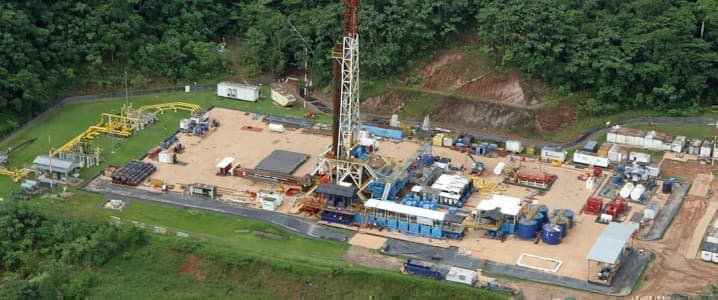One country often ignored when considering Latin America’s regional hydrocarbon sector is the Latin American country of Peru. Over the last two decades, the Andean country has developed rapidly to become one of the leading mining jurisdictions in Latin America. In only 20 years, Peru’s vast mineral wealth combined with it becoming an attractive jurisdiction for foreign investment caused gross domestic product to soar fourfold to $227 billion for 2019. The successful growth of the Andean country’s mining industry could be one of the reasons that Peru’s oil wealth was ignored. Sharply weaker oil prices are certainly another factor. There are growing signs that the Andean country is ready to realize its oil potential, particularly as Lima seeks to bolster economic growth and recover from the harsh impact of the COVID-19 pandemic. The IMF believes the Andean country’s GDP will contract by a very worrying 13.9% during 2020. Key to recovering from such a savage economic downturn, which could be the worst ever recorded, sees Lima looking to tap into Peru’s considerable hydrocarbon potential and revive the economy in the wake of the COVID-19 pandemic.
For some time, Peru’s petroleum potential has been ignored by the global energy majors with other Latin American jurisdictions such as Brazil, Colombia, Venezuela and Argentina gaining the lion’s share of attention. This is despite the Andean country possessing 18 sedimentary basins with hydrocarbon potential of over 88 million hectares. These include four main proven producing basins; the sub-Andean onshore Marañon, Ucayali, and Madre de Dios basins as well as the offshore Tumbes basin.
Peru Oil Basins

Source: PeruPetro.
At the start of 2020 Peru’s Ministry of Energy and Mines stated that the Andean country had proven and probable oil reserves of 3.1 billion barrels of oil equivalent, 33% weighted to crude and natural gas liquids at the end of 2018. That sees Peru ranked sixth for proven and probable oil reserves in Latin America behind Venezuela, Brazil, Mexico, Ecuador, and Argentina.
There is every indication that if investment, as well as upstream exploration and development activities, can be ramped-up those oil reserves will grow. Peru’s Ministry of Energy and Mines estimated in 2018 that the Andean country had 1.8 billion barrels of contingent oil resources and a further 29 billion barrels of prospective resources.
Related: Big Oil’s Petrochemical Bet Is A Risky One
The Ministry of Energy and Mines recently released a resolution aimed at promoting investment in oil exploration and production. The legislation is aimed at providing clearer guidelines, clarity, and greater predictability for all parties involved in upstream oil and natural gas activities in Peru. It is intended for this to stimulate further foreign direct investment in Peru’s hydrocarbon sector. During 2019 Peru received foreign direct investment inflows of $8.9 billion with mining energy being among the largest recipients, although the United Nations Conference on Trade and Development expects this to halve for 2020. The severity of the COVID-19 pandemic in Peru, which at the end of July 2020 was one of the top-10 countries globally for cases and deaths, will sharply impact investment inflows and petroleum operations. In response to the pandemic, Lima implemented a strict quarantine causing Peru’s petroleum industry to shutter by early May 2020 and eventually restart operations during mid-July. That had a sharp impact on Peru’s oil production which had been steadily climbing over the last decade to hit an average daily high of 363,693 barrels during 2019.
By the end of April 2020, the Andean country’s daily average hydrocarbon output had plunged 14% compared to a year earlier to 313,725 barrels and will fall further because of the impact of the pandemic lockdown and ongoing civil unrest. While higher-value oil production has fallen sharply since 2010, to average 53,000 barrels daily during 2019, natural gas output has been steadily climbing, reaching 223,993 barrels of oil equivalent for that year.

Source data: PeruPetro.
Growing natural gas production resulted from Lima investing heavily in Peru’s natural gas infrastructure and positioning the fossil fuel as an answer to the Andean country’s energy needs.
Related: Saudi Oil Minister: Oil Demand Could See A 97% Recovery By The End Of 2020
Community blockades and protests, notably in the Amazon, are impacting Peru’s petroleum production. Upstream oil producer PetroTal earlier this month was forced to shutter operations at its Bretaña field in the Northern Marañon basin because of civil unrest as protestors attempted to overtake that facility. In March 2020, Frontera declared force majeure at long-troubled Block 192 in the Marañon basin because protestors cut the electricity supply to its operations.
The loss of those two operations alone has shaved around 20,000 barrels daily from Peru’s oil production. Unrest in Peru’s northern Amazon is growing, fanned by the COVID-19 pandemic and community concerns over a lack of access to resources and environmental damage caused by the extraction of petroleum. This, along with significantly lower oil prices will impede Lima’s plans to expand oil exploration and production.
The central government is feeling considerable economic pressure, not only because of the harsh impact of the COVID-19 pandemic but also because of dwindling energy exports. That makes Peru a net hydrocarbon importer, placing pressure on an already fragile economy, highlighting why Lima needs to boost petroleum and natural gas production. Ongoing unrest and community opposition to oil operations, notably in Peru’s Amazon area sees global oil majors taking a wait and see approach. This is being amplified by sharply weaker oil prices with many upstream oil explorers and producers reluctant to invest in higher-risk jurisdictions.
By Matthew Smith
More Top Reads From Oilprice.com:
- Bezos And Blackrock Are Pouring Billions Into This $30.7 Trillion Trend
- Is This The Beginning Of The End Of Oil & Gas Exploration?
- Uncertainty Upends Mergers & Acquisition In Oil And Gas


















